In our last post, we hopefully made you want more – here comes Part 1 of our incredible Great Wall-hike.
As described, we decided on the guided hike on an unrestored section via a restored section.
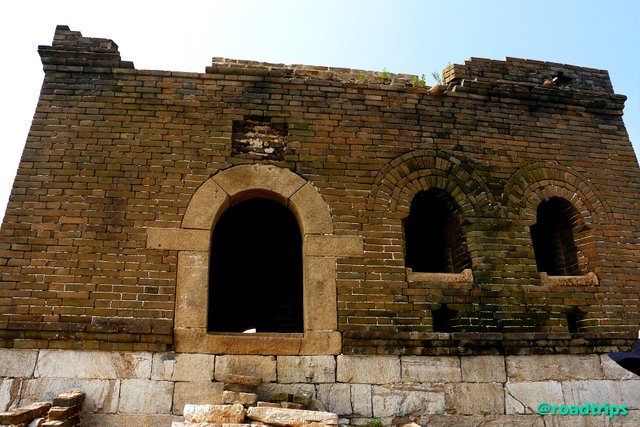
At 10 o'clock in the morning we are picked up by our guide Aaron. He seems kind of impatient and walks back and forth in the courtyard while we pack our things together - then we're off!
We get into a small van and chug through Beijing for almost an hour- we pick up another couple who also booked the tour. Thus, we are five in total today: The Swiss couple, Aaron and us.
After picking up Sabine and Norbert (the Swiss dudes), we drive another 2 hours and 70 kilometers north to Jiankou. If you think that this is too far away from Beijing – than good luck finding an uncrowded section that’s nearer ;-) We absolutely don’t recommend you Badaling. That’s where all Chinese tourists go and it could turn out as a sightseeing-nightmare!
In a tiny village somewhere in the Chinese pampas, we get out of the taxi, pack a lot of water (this was provided to us) and head off.
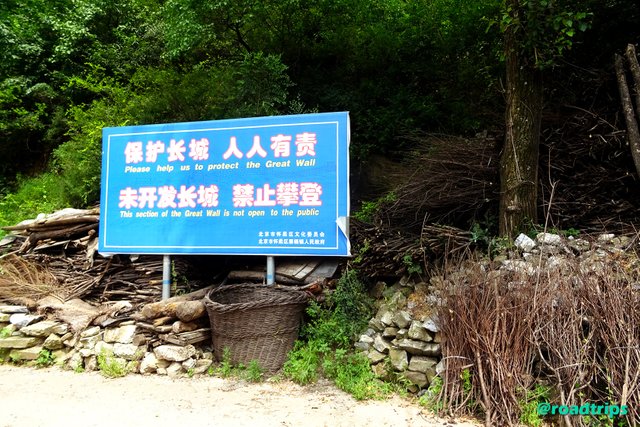
Quite ashamed, we walk past this sign, indicating that this section is closed to public.
We walk for 1 hour through the forest, steadily uphill. From time to time we see a watchtower of the Wall in the distance.
Unfortunately, we see trash here and there on the trail lying around and have to realize that in China, there is still no awareness of environmental or nature conservation. This is so frustrating!
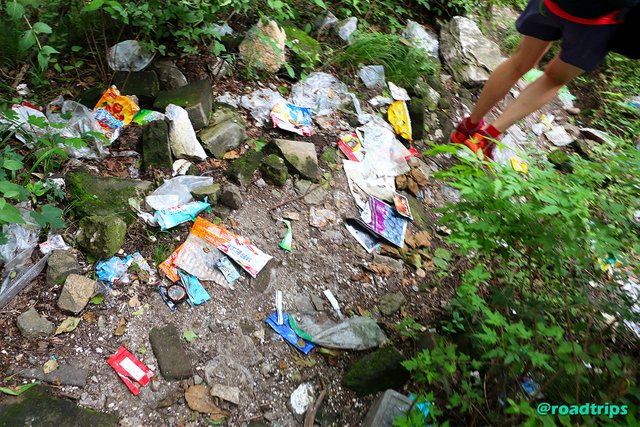
Some climbing skills are needed in the last section - and BAM – we are on the Great Wall of China!
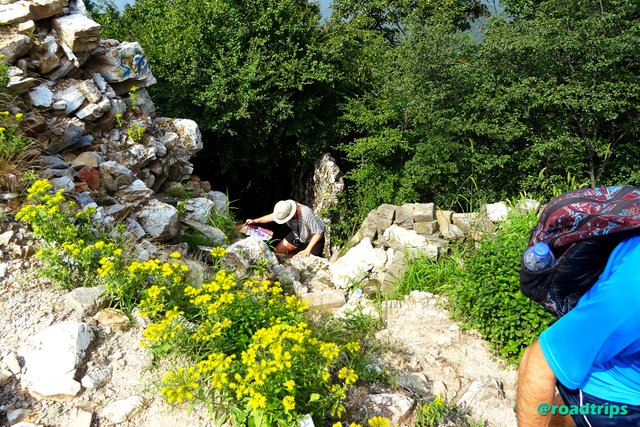
Unnecessary to mention that we arrive on top completely sweaty and exhausted, right? ;-) But the climate is much more comfortable than in the city.
Enthusiastically, we climb into the first watchtower and have a breathtaking view.
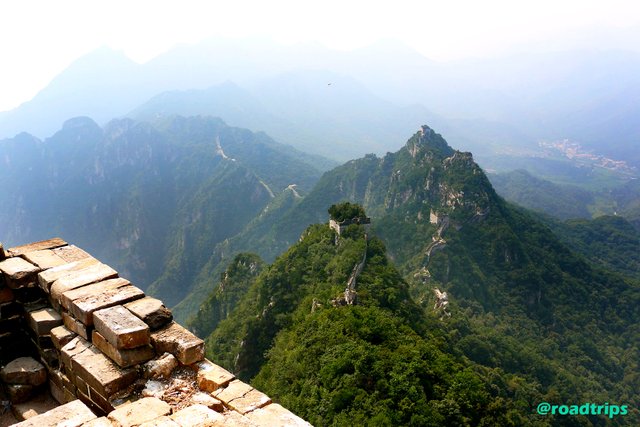
Then, the actual hike starts and we walk on the wild Wall to the east.
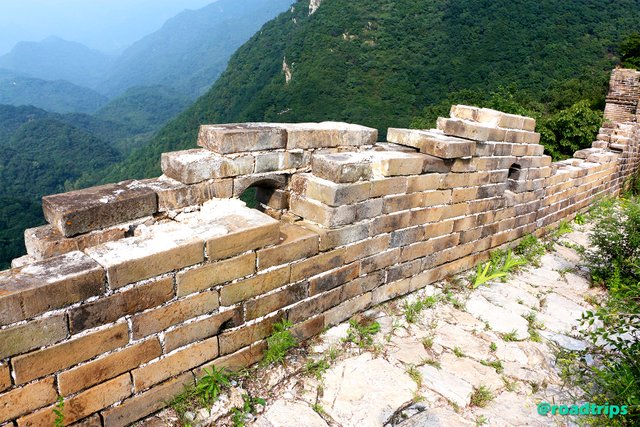
We have the Wall completely to ourselves, not a living soul around. We would never have thought that possible after our experience in Beijing!
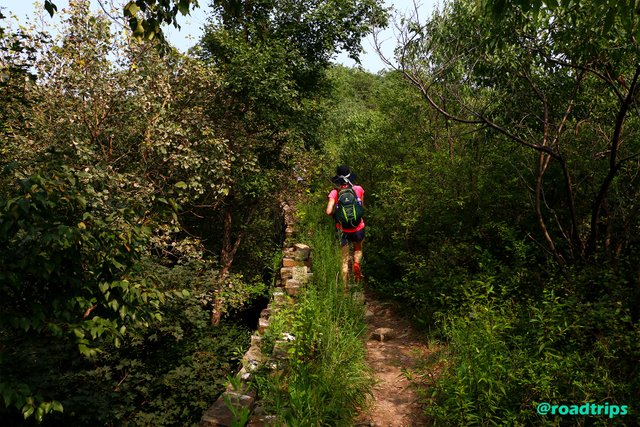
The Wall is partially very overgrown, we walk along peach trees, oaks and chestnuts and enjoy every step. Incredible that hundreds of years ago, Chinese soldiers were walking on this wall, marching from watchtower to watchtower looking for Mongolian enemies.
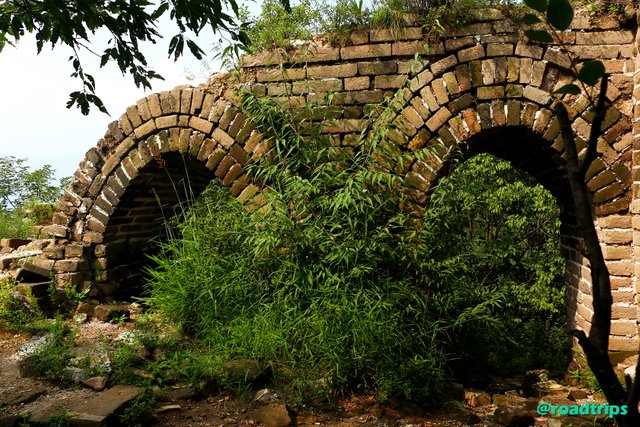
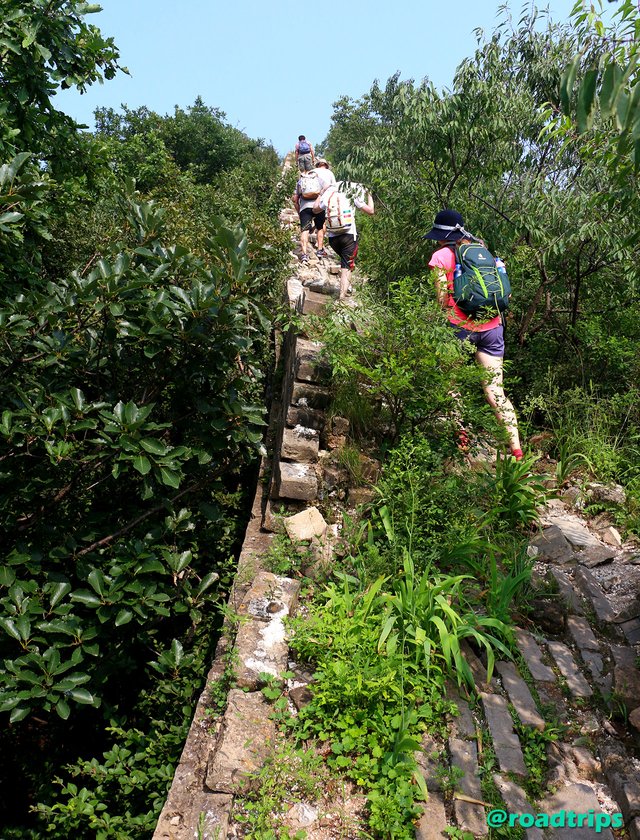
Partly, the wall is very steep
After about an hour's walk on the wall we pass the Ox Horn - the name stands for itself, right?
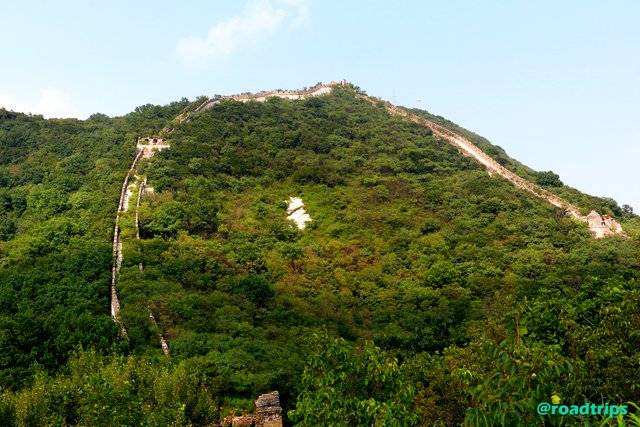
In Germany, we say: “Why should you do it the easy way if it also works out complicated?” ;-) In some parts, the Wall sections seem a bit arbitrarily constructed - maybe the thousands of workers lost the overview while building it.
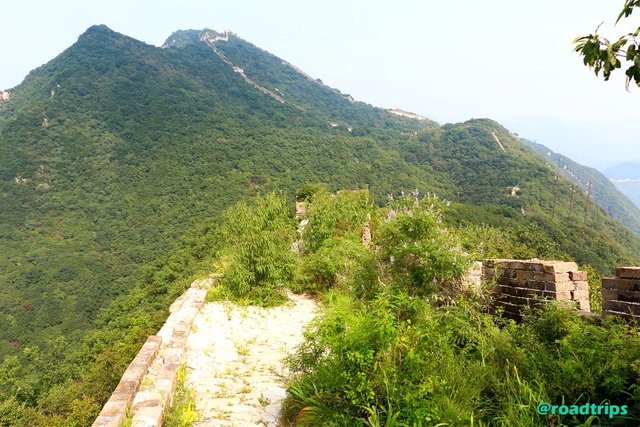
Because the path through the Ox Horn would be too dangerous, we turn right just before and cut off through the forest. A short time later, we come back on the Wall and walk through some watchtowers.
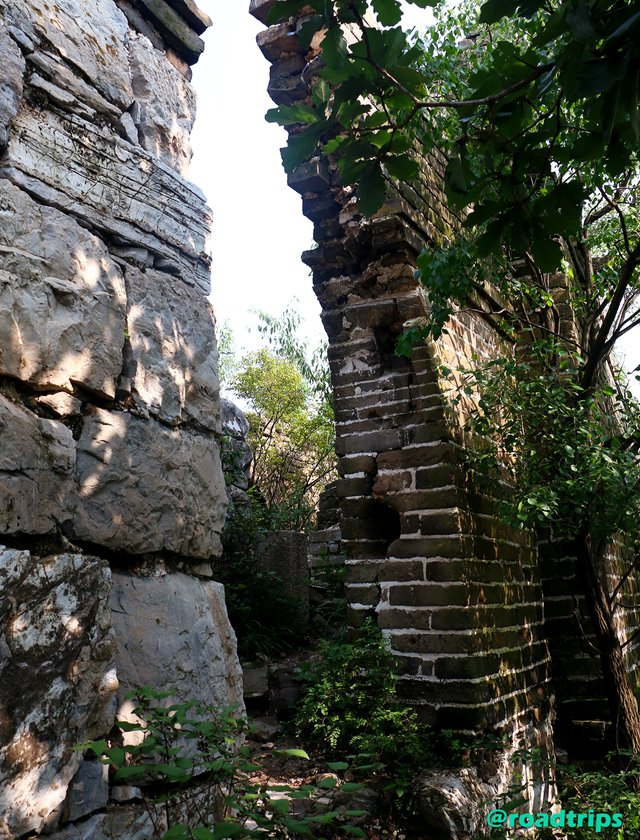
As we walk on the Wall, we begin to realize how vast its dimensions are. Imagine the quantities of stones that had to be transported high up the mountain to build the Wall. Not surprising that thousands of forced labourers have died under these strains...
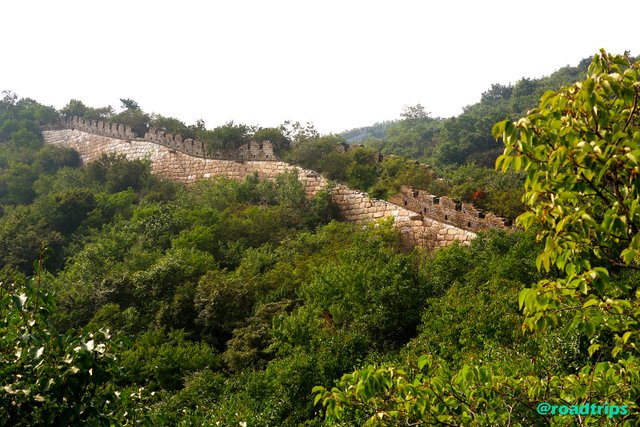
After 2 hours hike on the wild and unrestored section of Jiankou, we arrive at the restored part in Mutianyu - but more about that in our next post ;-)
German (same post)
Teil 2: Der unrestaurierte Mauerabschnitt
In unserem letzten Post haben wir euch hoffentlich Lust auf mehr gemacht – heute kommt Part 1 unserer unglaublichen Wanderung auf der Großen Mauer.
Wie beschrieben haben wir uns für die geführte Wanderung auf der Großen Mauer entschieden.

Vormittags um 10 Uhr werden wir von unserem Guide Aaron abgeholt. Er tigert etwas unruhig im Innenhof umher, während wir unsere Sachen zusammenpacken – dann geht es auch schon los!
Wir steigen in einen kleinen Van und tuckern erst einmal eine Dreiviertelstunde durch Peking – wir holen noch ein anderes Paar ab, das die Tour ebenfalls gebucht hat. Somit sind wir heute insgesamt zu fünft unterwegs: Wir, ein Schweizer Pärchen und Aaron.
Nachdem wir Sabine und Norbert (die zwei Schweizer) aufgegabelt haben, fahren wir weitere 2 Stunden und 70 Kilometer gen Norden nach Jiankou. Wenn ihr denkt, dass das zu weit von Peking entfernt ist, dann viel Glück dabei, einen nicht überfüllten Abschnitt zu finden, der näher ist ;-). Wir empfehlen euch keinesfalls Badaling. Dort gehen die meisten chinesischen Touristen hin, das könnte sich als Sightseeing-Alptraum entpuppen!
In einem winzigen Dorf irgendwo in der chinesischen Pampa lädt uns der Taxifahrer ab, wir packen jede Menge Wasser (wurde uns bereitgestellt) ein und stapfen los.

Beschämt laufen wir an diesem Schild durch, das uns darauf hinweist, dass dieser Abschnitt für die Öffentlichkeit geschlossen ist.
Wir wandern jetzt 1h durch den Wald, stetig bergauf. Ab und zu sehen wir einen Wachturm der Mauer in der Ferne.
Leider sehen wir auf dem Trampelpfad auch immer wieder Müll herumliegen und müssen frustriert feststellen, dass in China noch keinerlei Bewusstsein für Umwelt- bzw. Naturschutz besteht.

Auf dem letzten Abschnitt ist etwas Klettergeschick gefragt – und ZACK – sind wir auf der Großen Mauer Chinas!

Überflüssig, zu schreiben, dass wir komplett verschwitzt und ziemlich erschöpft oben ankommen, oder? ;-)
Begeistert klettern wir in den ersten Wachturm und haben eine atemberaubende Aussicht.

Dann geht die eigentliche Wanderung los und wir wandern auf der wilden Mauer gen Osten.

Wir haben die Mauer komplett für uns alleine, weit und breit keine Menschenseele. Das hätten wir nach unseren Erfahrungen in Peking niemals für möglich gehalten!

Die Mauer ist teilweise sehr zugewuchert, wir laufen an Pfirsichbäumen, Eichen und Kastanien entlang und genießen jeden Schritt. Unglaublich, dass vor hunderten von Jahren chinesische Soldaten auf dieser Mauer liefen, von Wachturm zu Wachturm marschierten und nach mongolischen Feinden Ausschau hielten.


Teilweise ist die Mauer sehr steil
Nach ca. einer Stunde Wanderung auf der Mauer kommen wir am Ox Horn vorbei – der Name steht für sich.

Spätestens hier fragen wir uns: warum einfach, wenn’s auch kompliziert geht? Teilweise wirken die Mauerabschnitte etwas willkürlich gebaut – vielleicht verloren die tausenden Arbeiter teilweise einfach den Überblick.

Weil der Weg über das Ox Horn zu gefährlich wäre, biegen wir davor ab und kürzen durch den Wald ab. Kurze Zeit später kommen wir dann wieder auf die Mauer und laufen durch einige Wachtürme.

Während wir auf der Mauer laufen, werden wir uns langsam bewusst, wie gewaltig deren Ausmaße sind. Stellt euch alleine schon die Mengen an Steinen vor, die für den Bau der Mauer weit hoch auf den Berg transportiert werden mussten. Nicht verwunderlich, dass tausende von Zwangsarbeitern unter diesen Strapazen verstorben sind…

Nach 2 h Wanderung auf dem wilden und unrestaurierten Mauerabschnitt von Jiankou kommen wir an den restaurierten Teil in Mutianyu an – doch dazu mehr in unserem nächsten Post ;-)
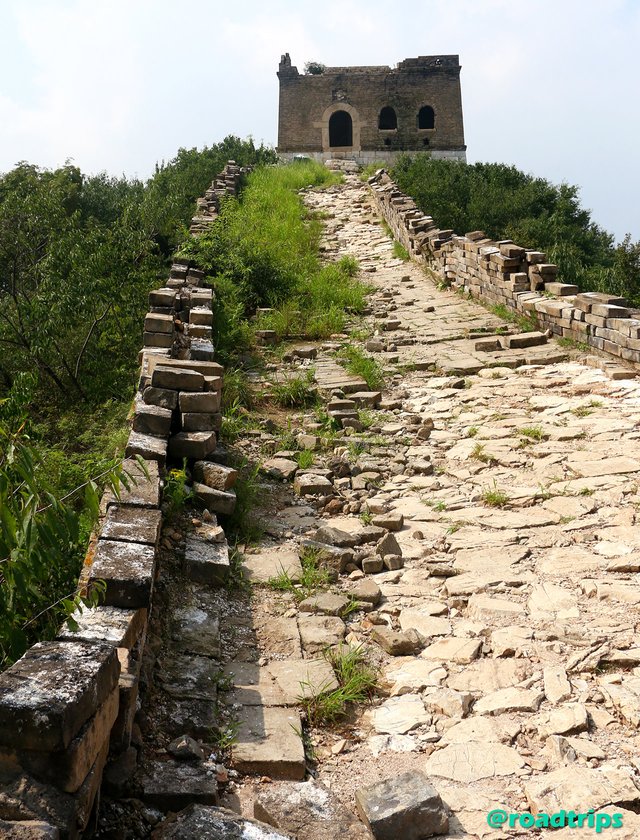
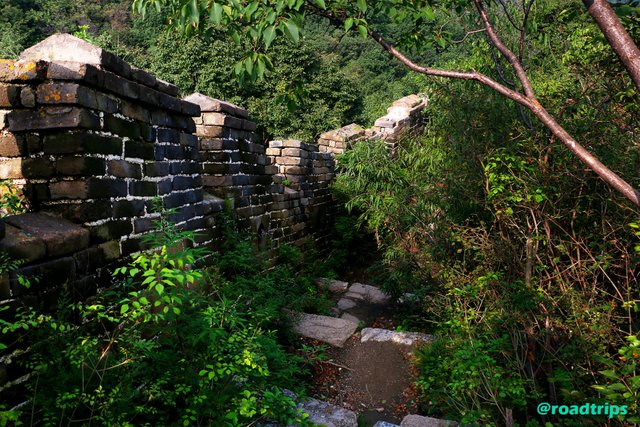
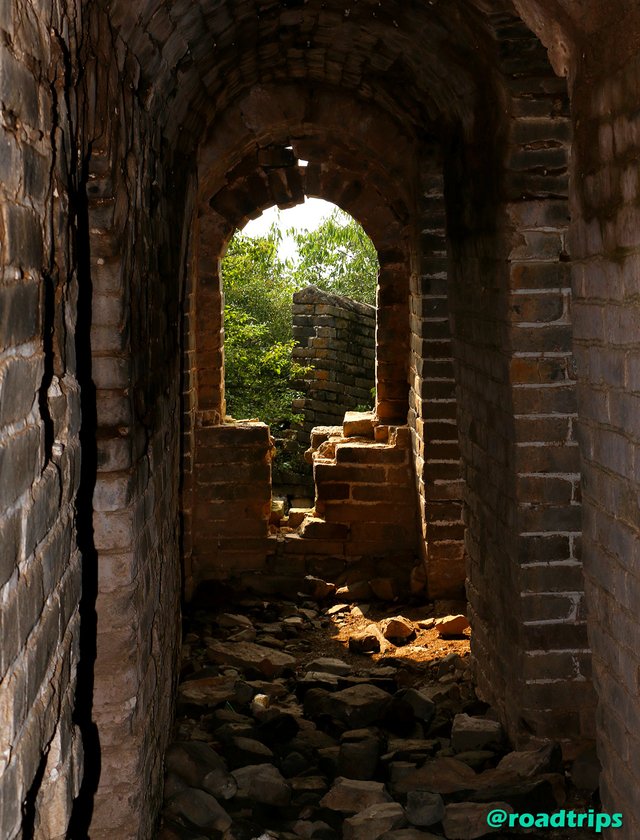

Congratulations, Your Post Has Been Added To The Steemit Worldmap!
Author link: http://steemitworldmap.com?author=roadtrips
Post link: http://steemitworldmap.com?post=china-10-off-the-beaten-track-breathtaking-hike-on-the-great-wall-of-china-2-3
Want to have your post on the map too?
Downvoting a post can decrease pending rewards and make it less visible. Common reasons:
Submit
Hiya, @livinguktaiwan here, just swinging by to let you know that this post made the Honorable mentions list in today's Travel Digest #418.
Your post has been manually curated by the @steemitworldmap team, and if you like what we're doing, please drop by to check out all the rest of today's great posts and consider upvoting and supporting us.
Downvoting a post can decrease pending rewards and make it less visible. Common reasons:
Submit
Congratulations! Your high-quality travel content was selected by @travelfeed curator @mrprofessor and earned you a partial upvote. We love your hard work and hope to encourage you to continue to publish strong travel-related content.
Thank you for being part of the TravelFeed community!
Learn more about our travel project on Steemit by clicking on the banner above and join our community on Discord.
Downvoting a post can decrease pending rewards and make it less visible. Common reasons:
Submit
I really love your post. Going to Asia is part of my bucket list of trips I want to make. So sad there is lot of trash. Most of human being don't appreciate all the beauty we have all around and hurts the earth :(
Downvoting a post can decrease pending rewards and make it less visible. Common reasons:
Submit
Yes, you are absolutely right. Hope you will make it to Asia soon ;)
Downvoting a post can decrease pending rewards and make it less visible. Common reasons:
Submit
The view is really good. A little bit sad because of the litter.
Downvoting a post can decrease pending rewards and make it less visible. Common reasons:
Submit